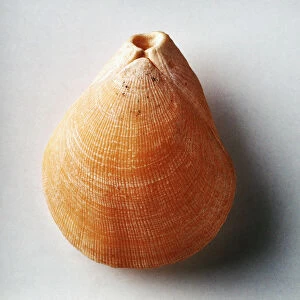Home > Arts > Artists > T > Paul Taylor
Didymograptus, fossil graptolite
![]()

Wall Art and Photo Gifts from Mary Evans Picture Library
Didymograptus, fossil graptolite
The two tuning-fork graptolite on this piece of Welsh Ordovician shale belong to the genus Didymograptus and have branches some some 5 cm in length with sawtooth-like thecae
Mary Evans Picture Library makes available wonderful images created for people to enjoy over the centuries
Media ID 8609438
© Mary Evans Picture Library 2015 - https://copyrighthub.org/s0/hub1/creation/maryevans/MaryEvansPictureID/10714685
Black Background David Lewis Fossil Fossilised Graptolite Graptolithina Hemichordata Lewis Ordovician Paleozoic Paul Taylor Phanerozoic Prehistoric Sedimentary Sedimentary Rock Shale Specimen Taylor Invertebrata
EDITORS COMMENTS
In this studio shot, the intricately detailed fossilized remains of two Didymograptus graptolites are showcased against a stark black background. Hailing from the Ordovician period of the Paleozoic Era, approximately 460 million years ago, these ancient invertebrates belong to the genus Didymograptus and are part of the larger Graptolitoidea class. The graptolites, named for their resemblance to the Greek letter gamma (Γ), are identified by their unique, two-pronged, tuning-fork like structures. Each of these graptolites features branches that extend some 5 cm in length, adorned with sawtooth-like thecae. These thecae, or protective cases, were home to the organisms' colonies of zooids, which were responsible for the graptolite's filter-feeding capabilities. Didymograptus graptolites were part of the Hemichordata phylum, which includes modern-day acorn worms and pterobranchs. They are classified within the Dichograptidae family and the Graptolithina order. The Ordovician shale from which these fossils were extracted is a sedimentary rock, formed from the accumulation and consolidation of clay and silt particles. This exquisite specimen, captured by renowned paleontologist Paul Taylor and documented by David Lewis, offers a glimpse into the rich marine ecosystems of the past and the diverse array of life that inhabited our planet during the Phanerozoic Con, a period marked by the presence of abundant fossilized remains. The intricate beauty of these ancient organisms continues to captivate and inspire scientists and enthusiasts alike, offering a tangible connection to the prehistoric world.
MADE IN AUSTRALIA
Safe Shipping with 30 Day Money Back Guarantee
FREE PERSONALISATION*
We are proud to offer a range of customisation features including Personalised Captions, Color Filters and Picture Zoom Tools
SECURE PAYMENTS
We happily accept a wide range of payment options so you can pay for the things you need in the way that is most convenient for you
* Options may vary by product and licensing agreement. Zoomed Pictures can be adjusted in the Cart.






